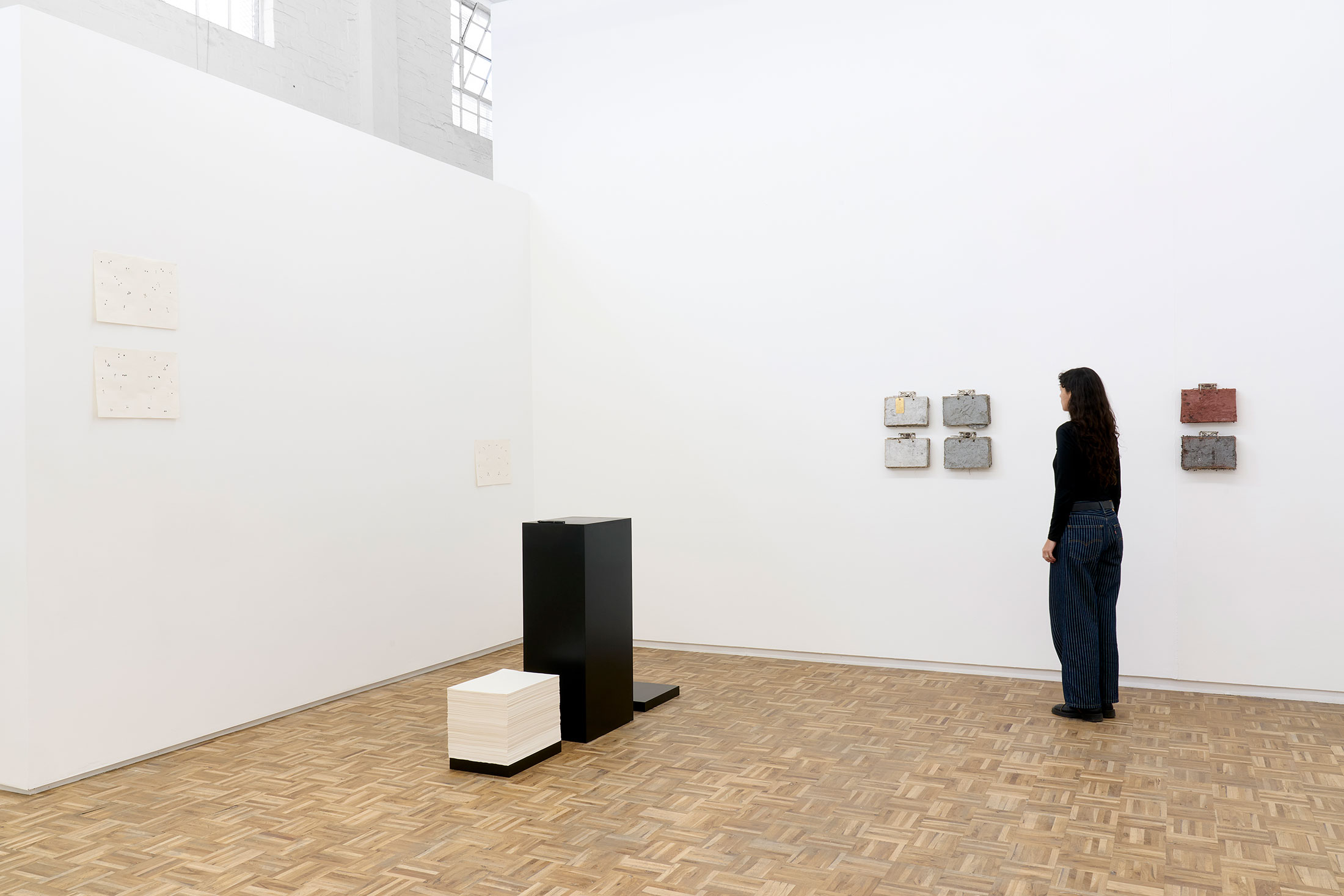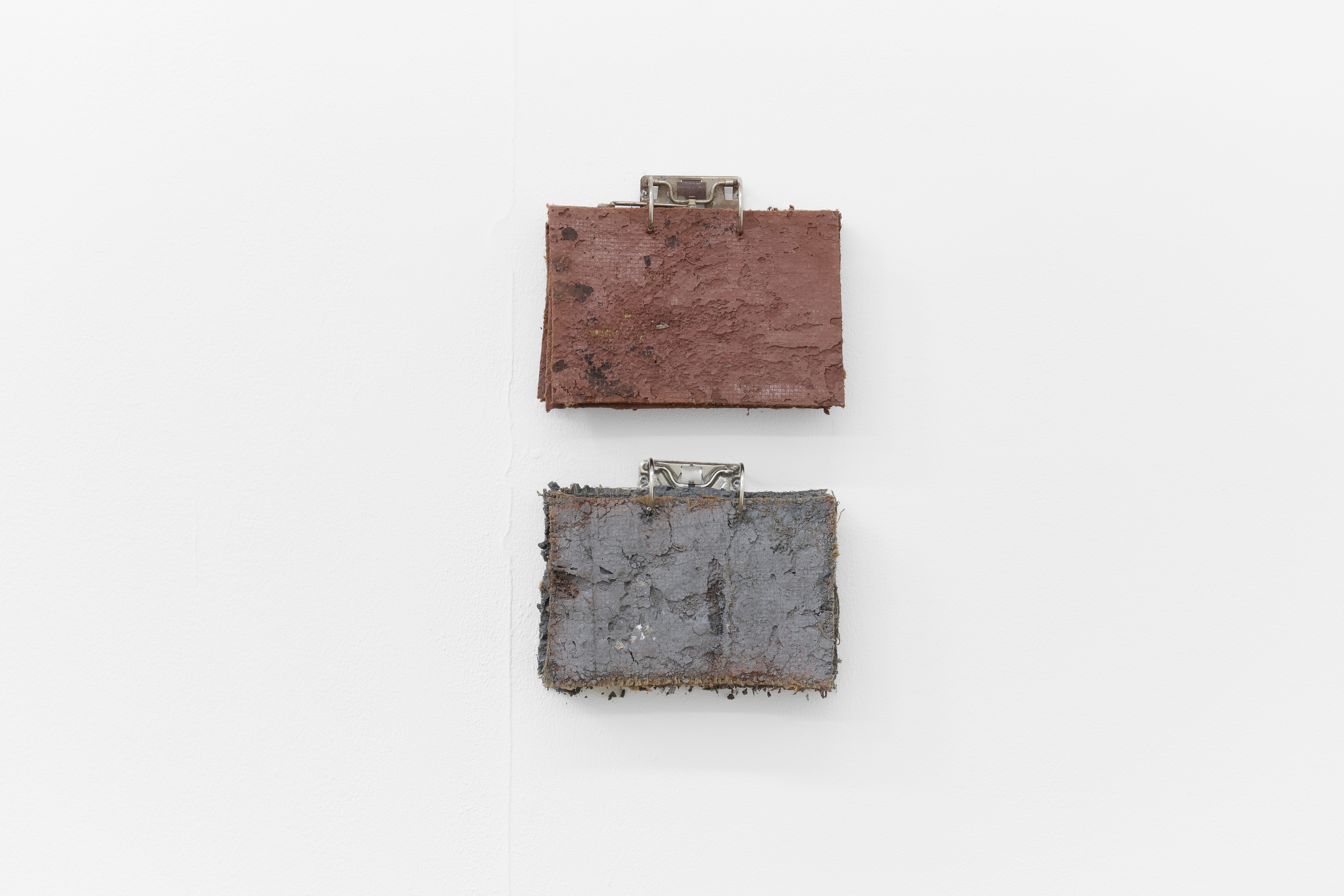









“Colonialism and colonization basically mean organization, arrangement.”
– V.Y. Mudimbe, The Invention of Africa: Gnosis, Philosophy, and the Order of Knowledge [emphasis added]
The space of art is secondary to the time of art.
– Gabriel Orozco, Of Games, The Infinite and Worlds
Value is (in) the future. Objects and experiences that acquire value do so by, among many means, collapsing at least two times; this present time and another time yet to come. It is this necessary and constitutive temporal dimension of value that is central to Nkomo’s new body of work, Games of Property. Through strategies as varied as play, social and participatory aesthetics, data sonification, mapping and cartography, Nkomo probes, on the one hand, the limits and structuring modalities of the institutions of art and our modern order, and a critique of the continuities between labour, capitalist abstractions, financial speculation, racial slavery and art, on the other.– V.Y. Mudimbe, The Invention of Africa: Gnosis, Philosophy, and the Order of Knowledge [emphasis added]
The space of art is secondary to the time of art.
– Gabriel Orozco, Of Games, The Infinite and Worlds
Games of Property1 investigates how the gallery works, its functions and processes and mechanisms of valorisation, that is, the gallery as a historically specific site, its means and modes of production. Central to its concerns, the gallery is invested in its own obfuscatory strategies and abstractions; what it does/produces and the very source of its own historical, material, political capacities to assign value and fetishise commodities. This historical specificity forms part of socially learned modes of knowing that structure and give coherence to at least the relationship between the artist, the audience and the gallery, and does so through and within the social and material infrastructure of the latter. This infrastructure enables the circulation of information and the symbolic, parasitic and decidedly material networks of meaning-making and valorisation that extends to markets, institutions, logistics, press etc all intricately embedded within globalised circuits of power and racial capital.
In Lists & values (Movement #1) (2025 ongoing), Nkomo engages with the administrative, bureaucratic and managerial processes of the gallery. The necessary tasks of the gallery staff and the necessary structural conditions upon which they act are incorporated into the internal logic of the work. The staff members are tasked with itemizing all the instances where they engaged with Nkomo and his exhibition in particular, covering everything between visiting the artist’s studio to undertaking basic administrative tasks. The staff aren’t necessarily tasked with carrying out this or that specific action nor to merely follow any clearly defined instructions; they simply do what they always do with a heightened sense of the relation between those actions, their duration and any sense of value they might attach to those activities. All of this takes place within a broad context that exceeds the geography of the gallery, spilling into the gallery staff members’ homes and dreams; they observe themselves being observed. The work exposes the congruence between capitalism, conceived strictly as a relational dynamic and as our dominant mode of production, and the epistemological framework of the gallery.
This complicated social field of the gallery is further pushed by another work, Games of Property (2025 ongoing). In this work, the audience members are invited to play a game of stick figures and black spots on sheets of paper. The game functions as a contest between two players and an occasion to draw and make marks on paper. However, In Nkomo’s games, the playing field immediately evokes the context of colonial conquest and the geography of racial slavery. The simple act of throwing a ball, spinning a coin, hitting a marble, as in his previous games, all articulate processes of violence and extraction and their afterlives. In Games of Property (2025 ongoing), the space is cut in two, splitting it into two irreconcilable worlds where violence is the absolute marker of time. With each move, the player demonstrates the individuating capacities of violence. The work engages with questions of race, violence, geography and the fictions of (private) property, personhood, possession, profits, ownership, law and land, wealth and worth, subjectivity and subjection.
The rubric of relational aesthetics is thus limiting; what we see here is a non-relation at play, or the relational modality of domination. Nkomo unveils the players’ psychic investment in the game’s telos of domination and absolute conquest; the playing field of the game, as a terrain of circulation and exchange, is structured by a fundamental problematic; the game always moves from a position of stability towards conquest. No game moves towards an equilibrium or harmony per se; but complete domination as its prized telos. The game’s teleological progression is a regression. (So we could say then that domination becomes redemption, that conquest is the ultimate point of harmony [of the game]). Racial domination and colonial conquest are, after all, structural asymmetry par excellence.
In Nkomo’s practice, the field of the artwork is analogues to the general social field of the world; that is, the field of play reflects the world we live in. Nkomo considers these abstractions within a theoretical schema composed of (1) the playing field, (2) the social field, and (3) the player’s psychic field. Through this triadic structure, he elaborates a critique of the constitutive (non)relation between violence and value, that is, how value cannot be conceived without violence.
These games and activities take as their object of critical inquiry the problem of symmetry and/or stability (both in games and political economy). Symmetry, together with the other two essential elements of games, namely arbitrariness and tedium (or the temporal dimension of games), can be understood as the point of equal parts prior to the game beginning. Nkomo analogizes this category [symmetry] to the fictions that structure the social field. Therefore in this logic, the structure of the game appears as homologous to the structure of racial financial capital where participating subjects (or players) appear as equal partners and autonomous subjects in one way or the other. The playing subject is offered by the game a metaposition unavailable to the subject in the social field of the world, spatio-temporally so. This metaposition masks a fundamental fantasy because the world can never be available to you in its totality, but the playing field can.
What’s at stake in Nkomo’s work is an engagement with systems of value, and particularly an interrogation of aesthetic categories, and their relation to the social link and general structural antagonisms. It seems that the radical (anti)aesthetic gesture perhaps is to sustain a critique of antagonism, “to stay in the hold of the ship, despite my fantasies of flight”, to return to Frank B. Wilderson, III’s instructive words.
1 The title is lifted from Thadious M. Davis, Games of Property: Law, Race, Gender, and Faulkner's Go Down, Moses (2003). Davis’ text expounds on the continuities between law, property (relations) and games in the context of racial slavery.